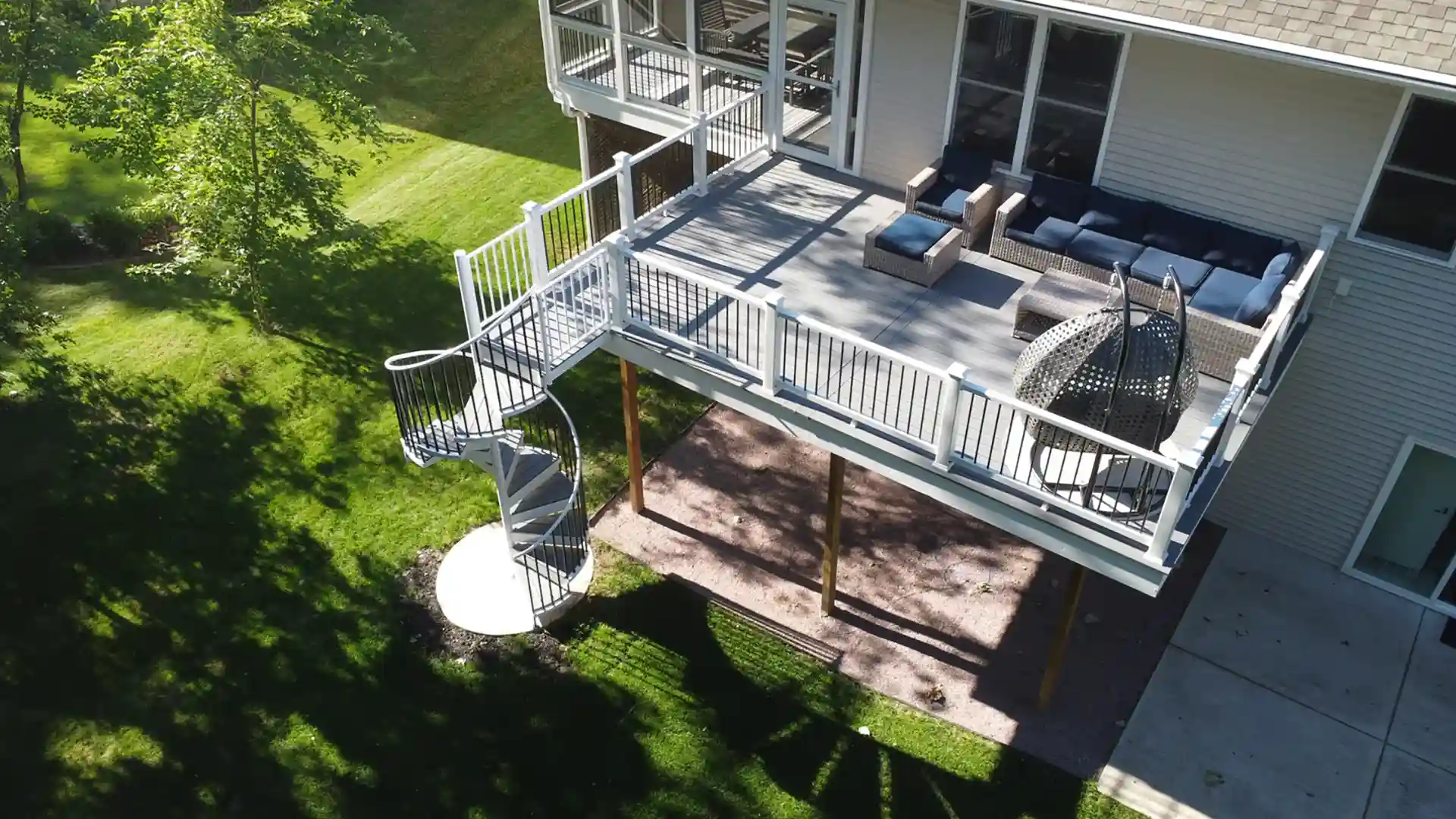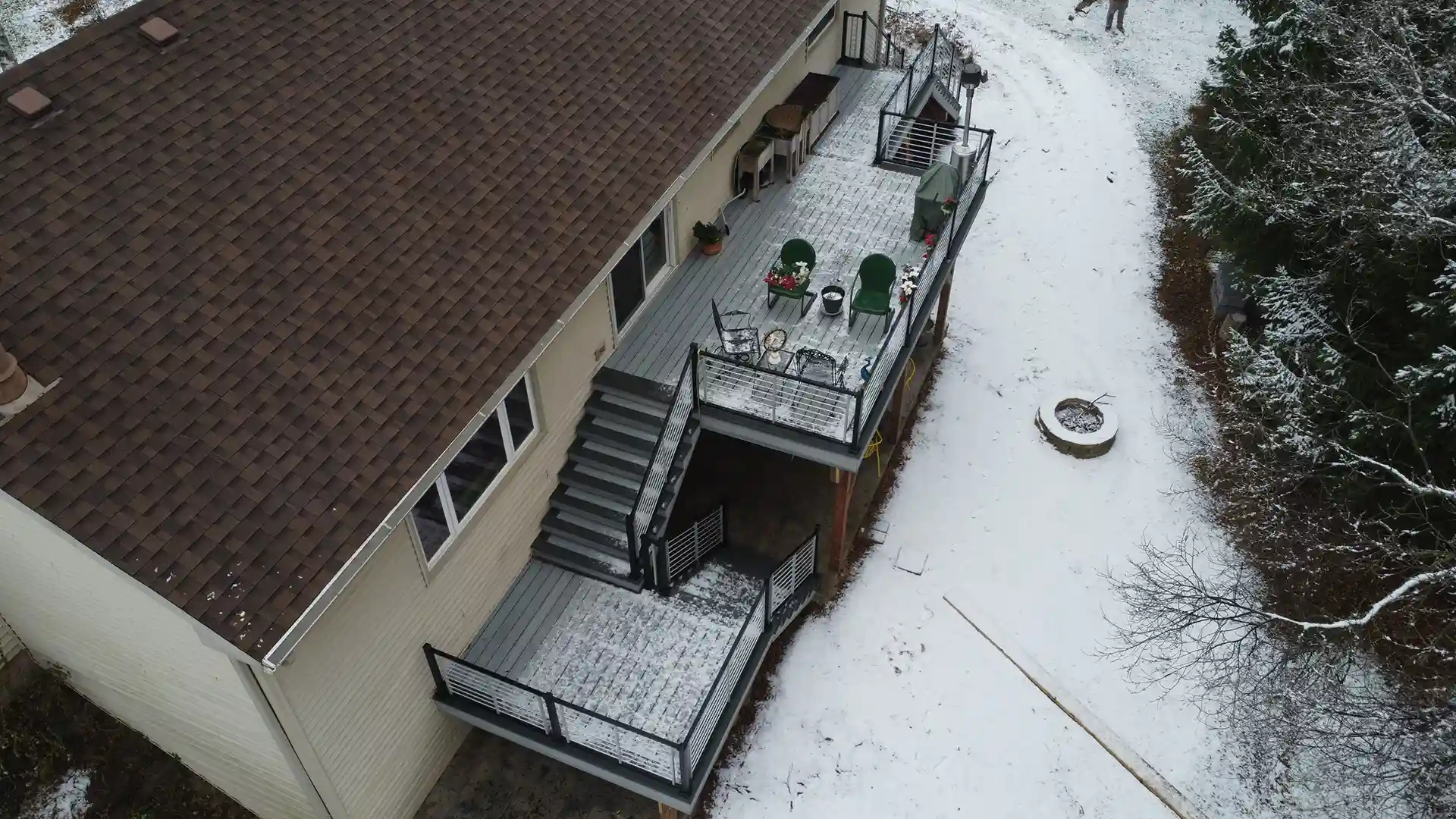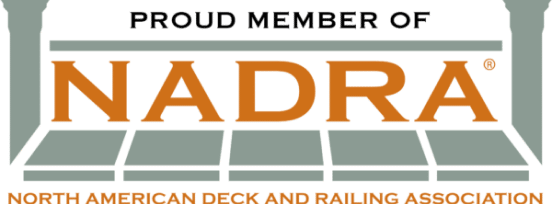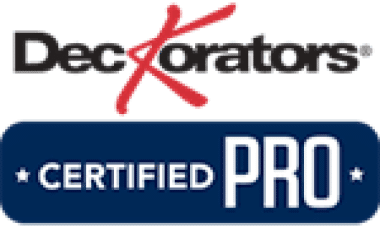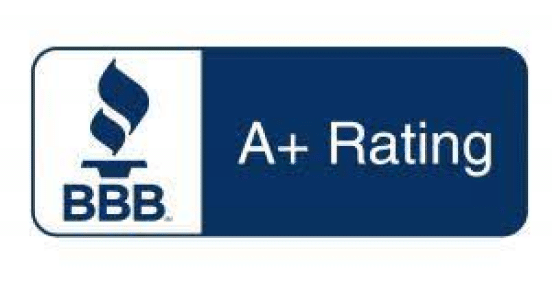A beautiful deck creates the perfect setting for family dinners, relaxing mornings, and backyard celebrations, in Dane County, where snow, sun, and rain often arrive in the same week, choosing the right decking material matters.
TimberTech and Trex are two of the most trusted names in composite decking, but they offer different strengths in terms of appearance, durability, and long-term value. Here’s how to choose the right one for your home.
Understanding the Brands: TimberTech and Trex Compared
Two big names stand out in composite decking, each with its own product lines, materials, and advantages.
- Trex Overview: Known for sustainability, Trex uses 95% recycled material in boards across its Enhance, Select, and Transcend lines. It brings affordability and simplicity to many deck projects.
- TimberTech Overview: Offering both composite and all-PVC boards, TimberTech includes Edge, Pro, and AZEK collections. Its realistic grain patterns and moisture resistance appeal to homeowners who want long-lasting beauty.
- Shared Benefits: Neither splinters, peels, or needs sealing. Both choices simplify outdoor living by reducing maintenance and increasing reliability.
How TimberTech and Trex Handle Wisconsin Weather
Cold snaps, summer storms, and heavy humidity test every inch of decking in Dane County. Your deck needs to last through it all.
- TimberTech in Dane County: The brand’s full-wrap capping and PVC lines shield against water, mold, and expansion. Ideal for shaded lots or lakeside properties, it holds firm when winter and water combine.
- Trex in Wisconsin: Trex boards have a ventilated core and three-sided shell to manage swelling and drying during the freeze-thaw cycle. Installed right, they handle snow and spring rain well.
Comparing the Look and Feel of TimberTech and Trex
Your deck should match your home’s style, both inside and out. Trex and TimberTech approach visuals in different ways.
- TimberTech Design Appeal: TimberTech boards show off rich, variegated hues like Weathered Teak and Dark Hickory, replicating the texture and tone of aged hardwood. Legacy and Reserve collections mirror reclaimed barnwood or hand-scraped oak—ideal for traditional porches or rustic lake homes.
- Trex Style Options: Trex boards lean into clean, contemporary colors like Island Mist and Spiced Rum, offering smooth, matte finishes that suit modern patios and bold architectural lines. The uniform grain gives the deck a sleek, consistent feel underfoot.
TimberTech vs Trex Cost: What to Expect
Choosing the right material involves weighing short-term cost against long-term value. Both brands offer solid returns, just in a different structure.
- TimberTech Pricing: Sits higher on the scale, especially in PVC or detailed composite collections. The added strength and finish often justify the price for homeowners who want premium materials.
- Trex Pricing: Budget-friendly tiers like Enhance make it ideal for smaller builds or economy-focused projects. It’s a smart way to enter the composite market without overspending.
Keeping It Clean: Maintenance Differences
Decks should offer comfort, not chores. Both TimberTech and Trex save time compared to wood, but their protection levels vary.
- TimberTech Durability: Top coatings help prevent scuffs, sun-fade, and staining. Cleanups take a few minutes with mild soap and water.
- Trex Upkeep: Simple to rinse, though basic lines may show wear sooner. Annual power washing can restore the appearance after heavy use or weather.
Warranty Comparison: TimberTech vs Trex Protection Plans
Extended warranties offer peace of mind, especially in a state where temperatures can swing significantly.
- TimberTech Coverage: AZEK and top-tier collections come with warranties up to 50 years. You also get fade and stain protection built into most lines.
- Trex Warranty: Coverage ranges from 25 to 50 years, depending on the product tier. Transcend and Signature lines offer the most extended guarantees.
Eco-Friendly Decking: Which Brand Does More?
More homeowners want to reduce their environmental impact, including those who use decking. Both brands meet that demand.
- Trex Sustainability: Leads in recycling, turning hundreds of millions of pounds of plastic and wood waste into decking each year.
- TimberTech’s Approach: Uses post-consumer materials in composites and skips wood in PVC boards entirely, helping cut long-term environmental costs.
TimberTech vs Trex Decking: What’s Right for Your Home?
A well-designed deck begins with the right materials and a team you can trust. 24×7 Deck Builders helps homeowners in Dane County compare TimberTech and Trex to find the best fit. Schedule your consultation today and take the next step toward creating your ideal outdoor living space.
TimberTech vs Trex FAQs
What are composite decking materials made of?
Composite decking materials are typically a blend of recycled plastics and wood fibers. This combination creates durable deck boards that mimic the beauty of wood while requiring minimal maintenance.
How does composite decking compare to a wood deck?
Composite boards resist rot, insects, and fading far better than a traditional wood deck. They also don’t require sanding, staining, or sealing, making them a more convenient option for your outdoor living space.
Are there many composite decking options available?
Yes, composite decking options come in a wide range of colors and textures to match any style. Whether you want a rustic look or a modern finish, you can find composite materials that reflect your vision.
Can I still enjoy the beauty of wood with composite materials?
Composite decking captures the natural look and beauty of wood without the upkeep. The embossed grain patterns and color variation offer the same visual appeal, but with longer-lasting performance.
Why choose composite boards for an outdoor living space?
Composite boards are ideal for outdoor living because they are engineered to handle moisture, sun exposure, and daily use. With minimal maintenance and lasting durability, they keep your deck looking great year after year.
